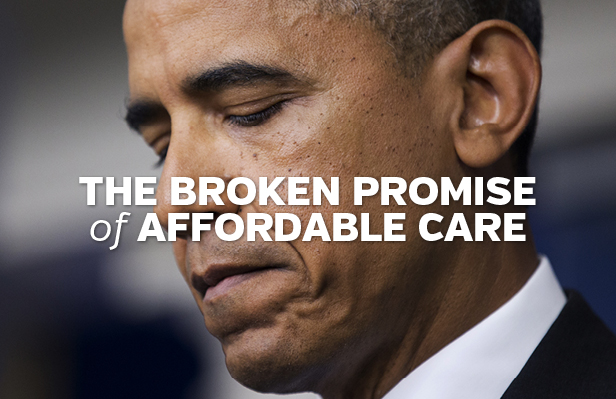Media

Obamacare Exchanges Continue To Dissapoint
Open enrollment for Obamacare exchange plans ends on December 15. It is convenient to blame the new administration and efforts to repeal the law for dwindling choices, disappointing enrollment, and increasing out-of-pocket costs. However, this year’s trends are nothing more than a continuation of Obamacare's failed patterns.
Choice and Competition
This year, many states struggled to secure one insurer in hundreds of counties before annual enrollment began. The average number of carriers selling individual marketplace plans in each state has fallen from five in 2014 to 3.5 for 2018.
Both Aetna and Humana stopped selling individual marketplace plans for 2018 and UnitedHealthcare has pulled back. Note that Aetna and UnitedHealthcare left Pennsylvania’s marketplace in 2016.
Pennsylvanians also face dwindling choices. The number of insurers is down from 14 to 9 since 2014. Likewise, the number of plans available in each county has dropped from 43 plans in 2015 to 14 today. In Philadelphia, only one company, Independence Blue Cross, offers insurance options under Keystone Health Plan East and QCC.
Adding to the frustration, insurance plans are routinely redesigned to mitigate premium increases. As a result, consumers constantly receive cancellation notices, interrupting their continuity of care.
Enrollment
Once again, 2018 enrollment is expected to fall below projections. An Avalere study shows national enrollment at half of last year's pace, which will bring total enrollment to 4.9 million—significantly below projections. In fact, exchange enrollment has fallen below CMS and CBO projections every year.
Rising Premiums and Out-of-Pocket Costs
While enrollment stalls, exchange premiums and out-of-pocket costs continue to surge. Statewide, premiums will increase by 30 percent. Specifically, a 27 year old selecting the cheapest plan in 2018 will pay nearly twice as much compared to 5 years ago.
Young adults in Pittsburgh are facing premium spikes from $119 to $199. Similarly, Philadelphia premiums climbed from $195 to $329. These figures do not even account for the initial spike in premium costs between 2013 and 2014 (the first year for exchanges).
Nationwide, overall health care spending is slowing, though it still outpaces the growth in overall gross domestic product. The exception to this overall slowing trend is out-of-pocket costs, including copays and deductibles, which have grown at rates not seen since 2007. Out-of-pocket health spending swelled by 3.9 percent to $352.5 billion in 2016, up from 2.8 percent growth in 2015. It’s no wonder consumers feel like there is no relief in sight.
High quality health care can be affordable when families can choose the health care they want, not the health care the federal government thinks they need. The ACA experiment and expansion of Medicaid clearly demonstrate government's inability to meet the extremely individualized health needs of Americans.
Consider the latest study on Medicaid from the Journal of the American Medical Association Oncology. The cancer survival rates for Californians with private and government coverage pre- and post-ACA show “substantial and persistent disparities in survival for patients with either no or other public insurance compared with private insurance.” Even more concerning, Medicare and privately insured patients improved their survival rates over time while Medicaid patients saw little progress. The authors state that Medicaid provided “persistently inferior survival” outcomes for cancer patients.
The verdict is in: the ACA is an abject failure. The only question is when will Congress have the courage to empower patients to make their own health care decisions?